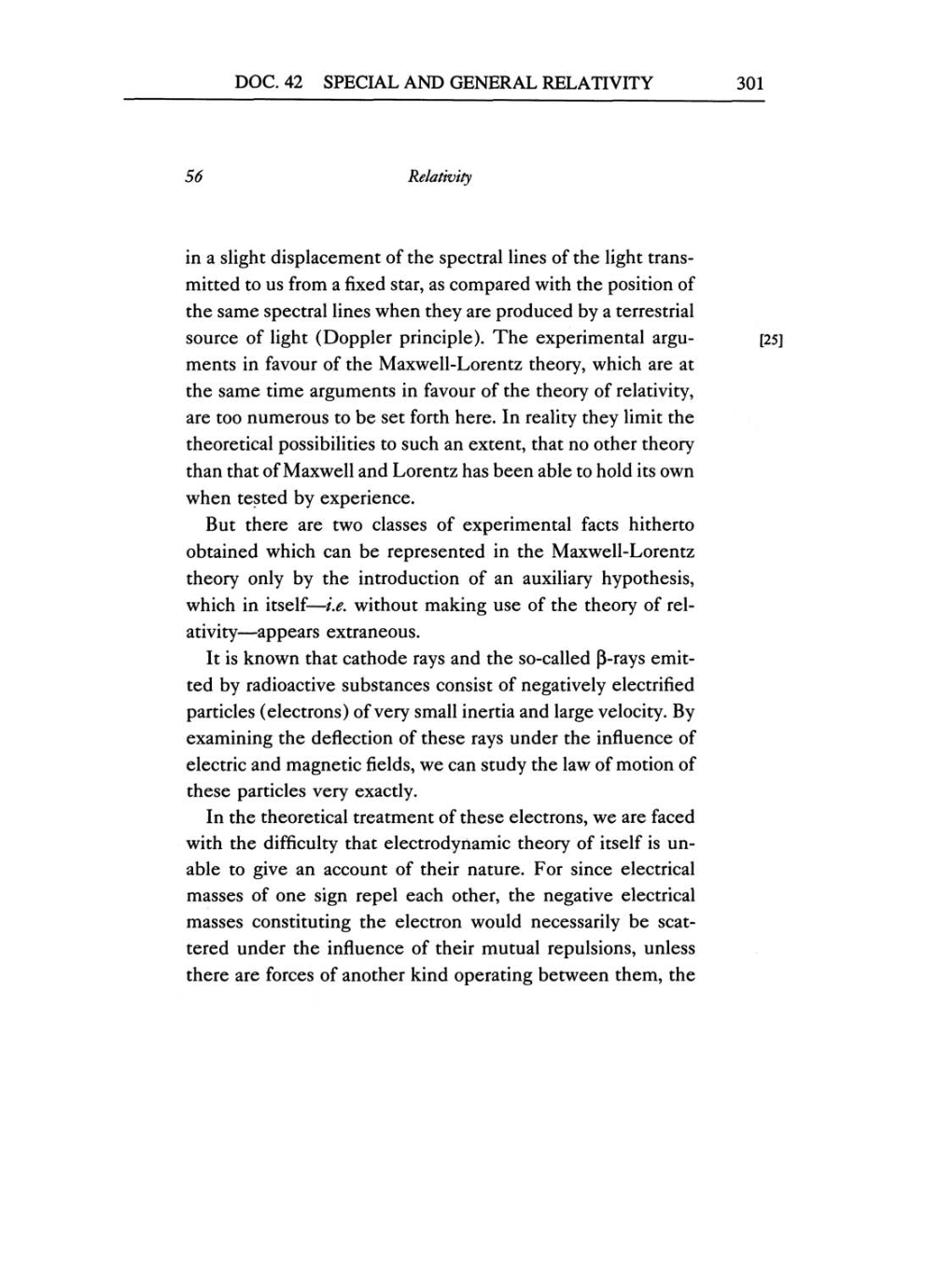DOC. 42 SPECIAL AND GENERAL RELATIVITY
301
56
Relativity
in
a
slight displacement
of the
spectral
lines of the
light trans-
mitted
to us
from
a
fixed
star, as compared
with the
position
of
the
same
spectral
lines when
they
are
produced by
a
terrestrial
source
of
light (Doppler principle).
The
experimental argu-
ments
in
favour of the Maxwell-Lorentz
theory,
which
are
at
the
same
time
arguments
in
favour of the
theory
of
relativity,
[25]
are
too numerous to
be
set
forth here. In
reality they
limit the
theoretical
possibilities
to
such
an
extent,
that
no
other
theory
than that of
Maxwell
and Lorentz
has
been able
to
hold
its
own
when
tested
by experience.
But there
are
two
classes of
experimental
facts
hitherto
obtained which
can
be
represented
in
the Maxwell-Lorentz
theory only by
the introduction of
an
auxiliary hypothesis,
which
in
itself-i.e.
without
making
use
of the
theory
of rel-
ativity-appears extraneous.
It
is
known that cathode
rays
and the so-called
ß-rays
emit-
ted
by
radioactive substances consist
of
negatively
electrified
particles
(electrons)
of
very
small
inertia and
large
velocity.
By
examining
the
deflection
of these
rays
under the influence of
electric and
magnetic fields,
we can
study
the
law
of motion of
these
particles very exactly.
In the theoretical
treatment
of
these
electrons,
we are
faced
with the
difficulty
that
electrodynamic theory
of itself
is
un-
able
to
give
an
account
of their
nature.
For since electrical
masses
of
one
sign
repel
each
other,
the
negative
electrical
masses
constituting
the electron would
necessarily
be
scat-
tered
under the
influence
of
their mutual
repulsions,
unless
there
are
forces of another kind
operating
between
them,
the
